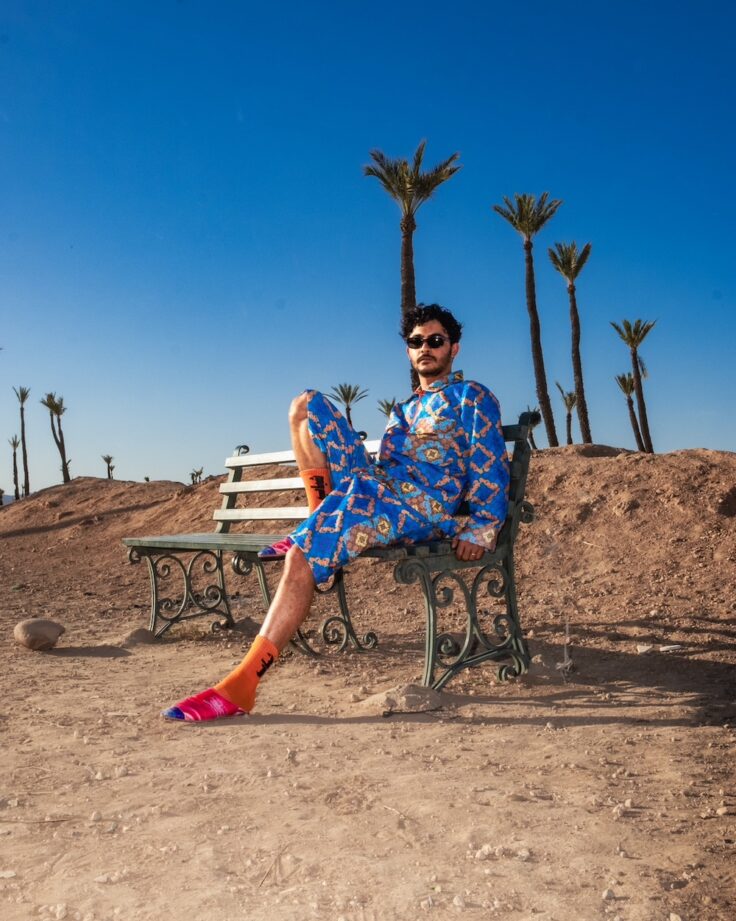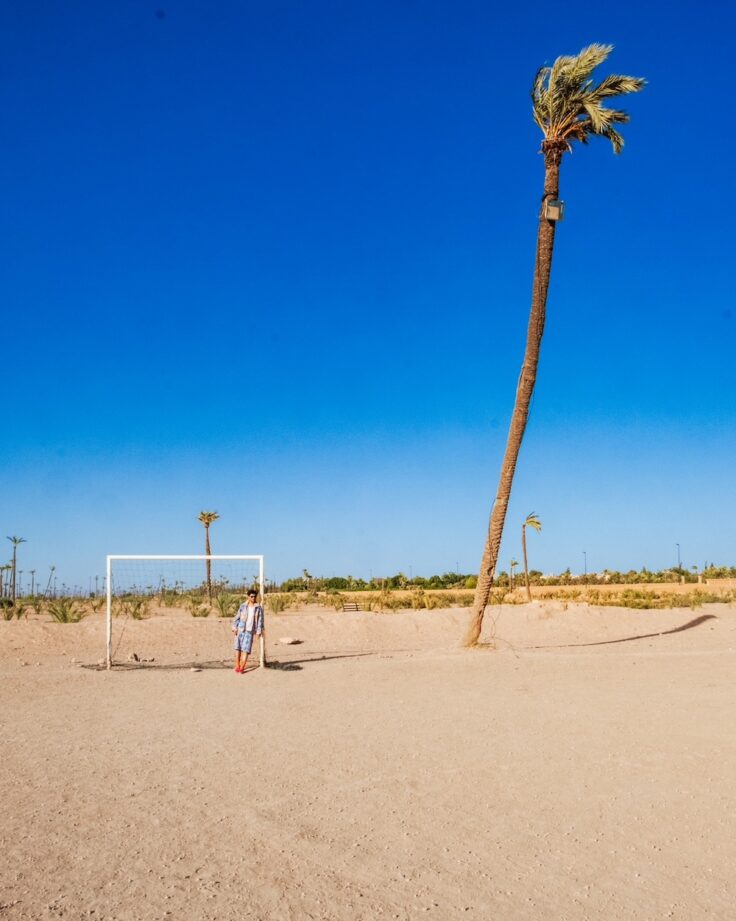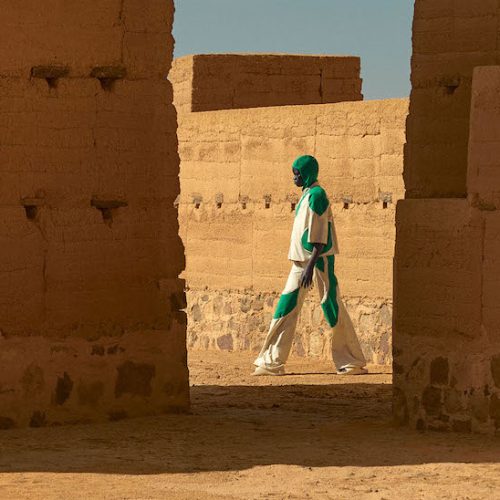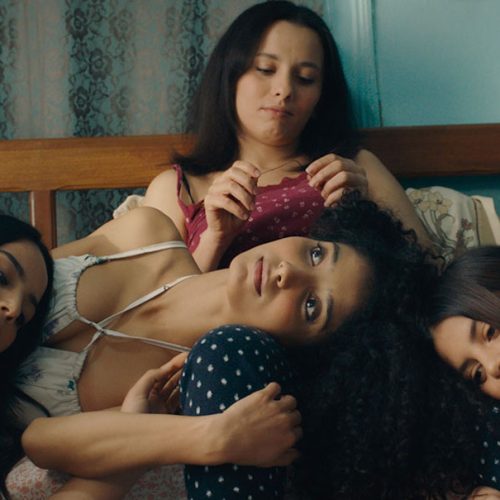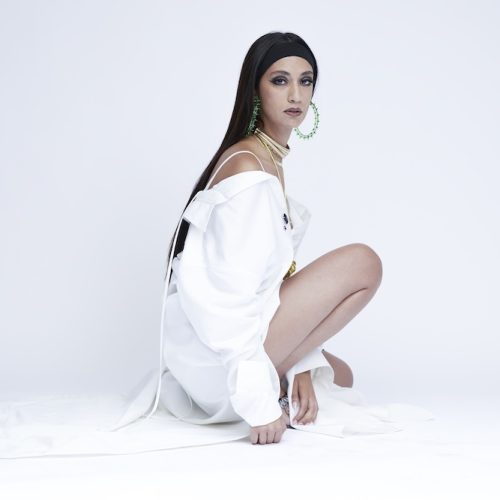The past couple of years have seen a bright spotlight turned on Morocco. Through the lens of Yassine Taha, we are invited to immerse ourselves in the rich heritage of the North African country, embracing the diverse influences that shape its fashion landscape.
In the Paris-based photographer’s newest editorial, he teamed up with local photographer Yazid Bezzaz to bring their creative vision to life. The planning process was meticulous, yet the collaboration flowed effortlessly. “As always, when I go to Marrakech, the first thing I do is plan a shoot with Yazid Bezzaz,” Taha told MILLE. “I called him and we organized everything in one or two days via Whatsapp. The process involved meticulous planning and attention to detail, but it’s always easy going when we collaborate. We carefully curated a selection of Hassan Hajjaj’s garments that would harmonize with the majestic palm trees and the local lifestyle.”
A place of serene beauty and tranquility, Marrakech’s enchanting palm grove, where the images were captured, provided a striking contrast against the vibrant colors and intricate details of the fashion pieces, enhancing the visual impact of the images. The choice of location perfectly aligned with the vision, further highlighting the fusion of nature and culture. “The grove provided a stunning backdrop, with its giant palm trees and serene atmosphere, perfectly complementing the vision we had for this editorial,” shared Taha, who aimed to explore themes of identity, globalization, and the intersection of cultures through his portraits.
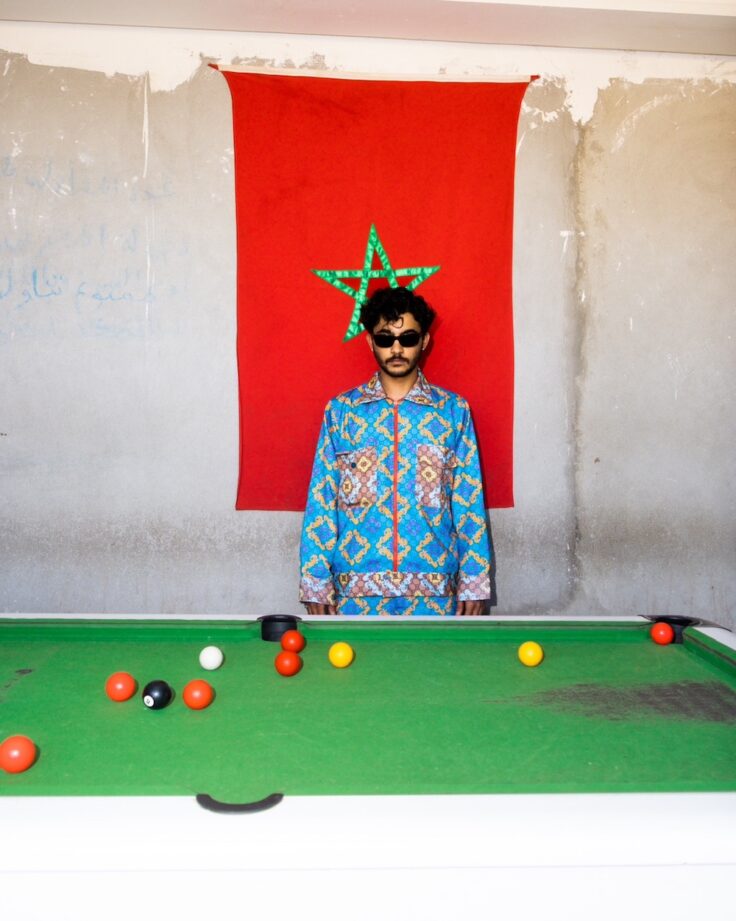
As a Moroccan fashion photographer, Taha sought to celebrate the profound cultural heritage and vibrant artistic traditions of his native country. “The messaging conveyed through these images is one of cultural pride, diversity, and artistic fusion,” explains Taha. “It serves as an invitation to embrace the richness of Moroccan heritage, challenge preconceived notions of beauty, and appreciate the creative evolution of Moroccan fashion,” he said.
“This editorial is a testament to the beauty and creativity that can be found in Moroccan fashion. It showcases the harmonious blend of tradition and innovation and presents a fresh perspective on Moroccan culture,” he continued.
The young artist has always been drawn to the art of photography. From an early age, he was surrounded by cameras and creative equipment, nurtured by his parents and older siblings. “I have always been interested in photography. When I was young my parents and older sisters used to give me cameras, polaroids, and all type of creative equipment,” he recalls.
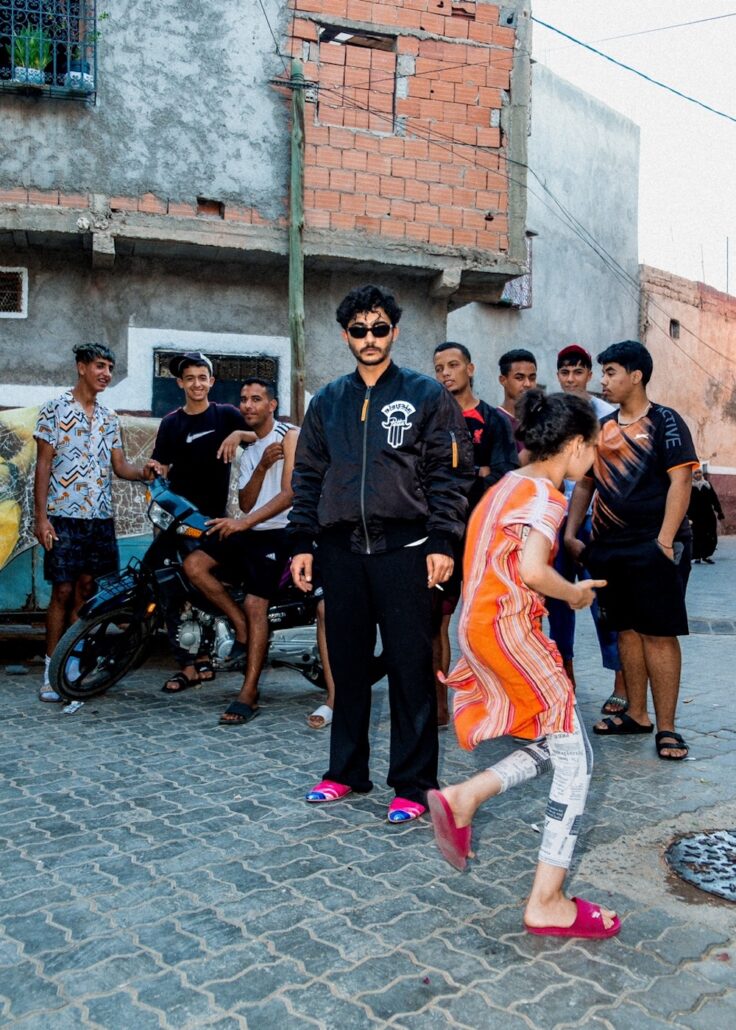
His first camera, a Rollei Prego 125 acquired in 2019 for a mere 12 euros, remains a cherished possession. Photography became an outlet for their artistic expression, alongside other passions such as music, painting, and video games.
While the photographer harbors a desire to collaborate with top-tier fashion brands, their focus lies in partnering with individuals and entities that share their values and seek to challenge the conventional norms of fashion photography. His impressive portfolio includes work with French rapper Freeze Corleone, Moroccan artist Snor, and multi-platinum producer Phazz. For Taha, it is essential to engage in projects that transcend the traditional confines, embracing a fresh perspective and bringing about positive change in the industry.
Among the many remarkable projects the Moroccan artist has worked on, a few hold a special place in his heart. “Late for Work,” a shoot on the beach in Casablanca, stands out as a memorable experience that captured the essence of spontaneity and joy. The collaboration with Snor was equally enjoyable, with the duo exploring locations and capturing moments in a day filled with creative energy. Additionally, the photographs taken in Zanzibar hold significant meaning, as they were the first prints sold to support the Masai people Taha encountered during the journey.
